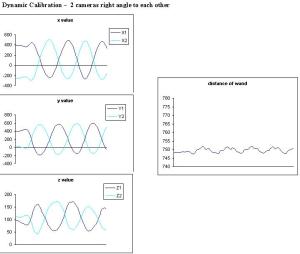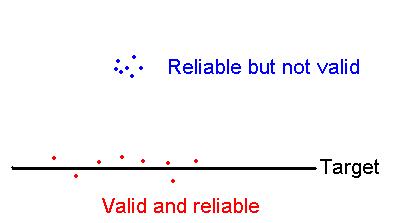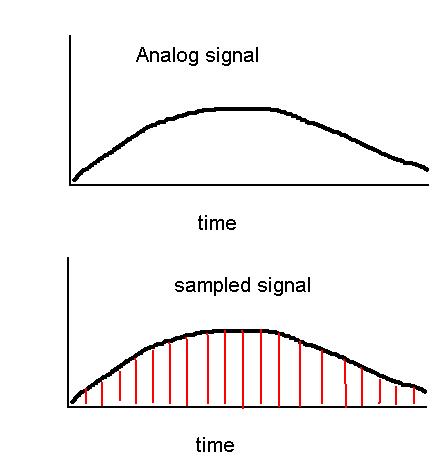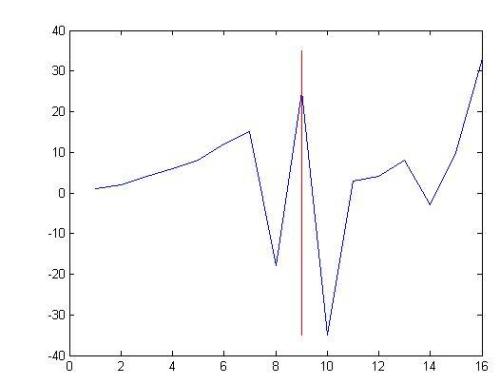A wand of fixed length is waved throughout the whole volume of motion capture. Our goal is to calculate the relative position of the wand and thereby its length that is captured by the video cameras. By this process we can come to know that if the cameras have captured correctly the location and orientation of the wand or not.
For example, if 2 cameras capture 2 markers that are fixed at the end of a moving wand of length 75cm (750 mm), the length of the wand could be found out if we know the x,y and z coordinates of those 2 markers at any particular time.
We can use the following formula to calculate the distance between the two markers of the wand: = SQRT((X2-X1)^2+(Y2-Y1)^2+(Z2-Z1)^2).
1) What if the cameras are kept side by side to the movement of the wand?
We might have lots of possibilities to miss out seeing both the markers at certain orientation. This might result in wrong calculation of the distance of the wand in certain orientation/coordinates.
Fig. 1. If you look at Fig. 1. the distance of wand ranges between 745 mm to 775 mm across the time. But we know the wand has a fixed length, and therefore there is an error while capturing the markers in the wand. The error is at the z coordinate where both markers appear to be at a single position, which means only one marker was visible at that particular orientation!
2) What if the cameras are kept right angle to each other when they capture the movement of the wand?
The cameras will capture the markers in the wand in all possible orientation. We will have accurate length of the wand in any direction of the movement.

Fig. 2. The markers of the wand were captured in all directions with a near perfection and therefore, the distance/length of the wand remains relatively stable at 750 mm.


 The picture depicts the targets of an archer. The blue clustered targets show that the archer is way-off from the actual target (in our case, measurement) but is consistent. However, our measurements need to be close to the target in order to be valid. Therefore, reliability does not guarantee that our device measures fine. We need validity so that we can say that our device measures what we actually want to measure.
The picture depicts the targets of an archer. The blue clustered targets show that the archer is way-off from the actual target (in our case, measurement) but is consistent. However, our measurements need to be close to the target in order to be valid. Therefore, reliability does not guarantee that our device measures fine. We need validity so that we can say that our device measures what we actually want to measure. Either we can mention the digital signal by its sampling frequency or by the sampling interval. Sampling interval is the interval between any two samples. Here in our case (1000 Hz-sampling frequency), the sampling interval will be 1/1000 = .001 (1 millisec).
Either we can mention the digital signal by its sampling frequency or by the sampling interval. Sampling interval is the interval between any two samples. Here in our case (1000 Hz-sampling frequency), the sampling interval will be 1/1000 = .001 (1 millisec).